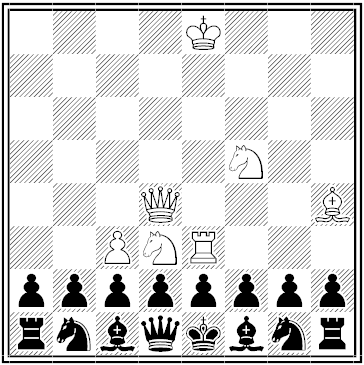Inside Out
The Pythagorean theorem has a reciprocal variant:
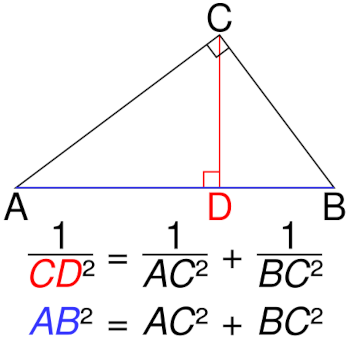
In combination with the inverse-square law, this means that identical lamps placed at A and B will produce the same light intensity at C as a single lamp at D.
Food for Thought
Cannibalism shocks us terribly. Yet I remember talking to an old cannibal who from missionary and administrator had heard news of the Great War raging then in Europe. What he was most curious to know was how we Europeans managed to eat such enormous quantities of human flesh, as the casualties of a battle seemed to imply. When I told him indignantly that Europeans do not eat their slain foes, he looked at me with real horror and asked me what sort of barbarians we were to kill without any real object.
— Bronisław Malinowski, “Anthropology Is the Science of the Sense of Humour,” 1937
Black and White
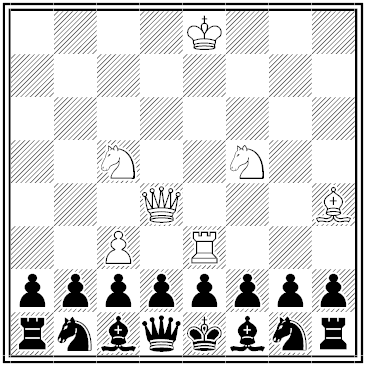
Norwegian broadcaster NRK presented this problem during its coverage of the 2021 FIDE World Chess Championship in Dubai. White is to give mate on the move. (Warning — there’s a trick.)
Double Duty
What’s the greatest number of Fridays that can fall in February? We might say five, imagining a leap year in which February 1 falls on a Friday.
“However, it is possible to reckon double the number of Fridays in the month of February alone,” contends Soviet science writer Yakov Perelman. “Imagine a ship plying between Siberia and Alaska and leaving the Asiatic shore regularly every Friday. How many Fridays will its skipper count in a leap-year February of which the 1st is a Friday? Since he crosses the date line from west to east and does so on a Friday, he will reckon two Fridays every week, thus adding up to 10 Fridays in all.”
“On the contrary, the skipper of a ship leaving Alaska every Thursday and heading for Siberia will ‘lose’ Friday in his day reckoning, with the result that he won’t have a single Friday in the whole month.”
(From Astronomy for Entertainment, 1958.)
Cryptarithm
A pleasing puzzle by Eric LeVasseur:
PI × R2 = AREA
If each letter in this expression (but not the exponent 2) is replaced with a corresponding digit, the resulting equation will be valid. What are the digits?
Misc
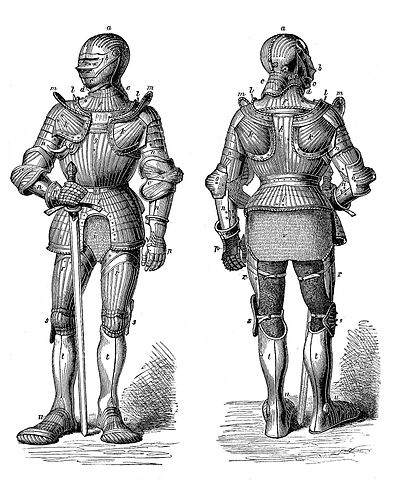
- It’s illegal to enter the Houses of Parliament wearing a suit of armor, according to a 1313 statute.
- “All things in moderation” is an immoderate policy.
- If a prime number is made up entirely of 1s (e.g., 11), then the number of its digits is prime.
- The word CARBON is itself made up of element symbols (Ca, Rb, O, N). (Dmitri Borgmann)
- Interior decorator Nicholas Haslam: “All it comes down to is making a setting in which people look prettier.”
07/17/2024 UPDATE: Several readers point out, correctly, that carbon is hardly the only elemental “chemical word” — indeed, some elements can be spelled in multiple ways. I’ve assembled this list from multiple contributions:
ArSeNiC ArSeNIC
AsTaTiNe
BiSmUTh BISmUTh
CArBON CaRbON
CoPPEr COPPEr
IrON
KrYPtON
NeON
OGaNeSSON OGaNEsSON
PHoSPHoRuS PHOSPHoRuS PHOsPHoRuS PHoSPHORus PHOSPHORuS PHOsPHORuS
SiLiCoN SiLiCON SILiCON SILiCoN
SiLvEr SILvEr
TeNNeSSINe TeNNEsSiNe TeNNEsSINe
TiN
XeNON XeNoN
TiN is even a valid compound, titanium nitride.
Of these Borgmann had found arsenic, carbon, iron, neon, phosphorus, silicon, and xenon when he wrote in 1974, “surely the most unusual is CARBON which can be factored into elements not including itself.” But that property wasn’t unique even within his limited list, as can be seen above.
Many thanks to readers Gareth McCaughan, Catalin Voinescu, and Eric Harshbarger for writing in about this.
Behindhand
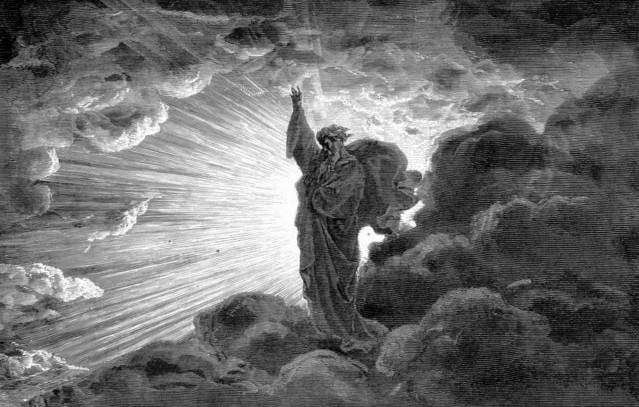
Now, are not those still full of their old carnal nature who ask us: ‘What was God doing before he made heaven and earth? For if he was idle,’ they say, ‘and doing nothing, then why did he not continue in that state forever — doing nothing, as he had always done? If any new motion has arisen in God, and a new will to form a creature, which he had never before formed, how can that be a true eternity in which an act of will occurs that was not there before? For the will of God is not a created thing, but comes before the creation — and this is true because nothing could be created unless the will of the Creator came before it. The will of God, therefore, pertains to his very Essence. Yet if anything has arisen in the Essence of God that was not there before, then that Essence cannot truly be called eternal. But if it was the eternal will of God that the creation should come to be, why, then, is not the creation itself also from eternity?’
— Augustine, Confessions
Unusual Biological Names

- Herpetologist Mark Scherz named three tiny species of Malagasy frog Mini ature, Mini scule, and Mini mum.
- Malacologist Alan Solem named a Fijian land snail Ba humbugi.
- The name of each species in the African spider genus Palindroma is a palindrome: P. aleykyela, P. avonova, P. morogorom, P. obmoimiombo, P. sinis.
- The binomial name of the crowned slaty flycatcher has 15 syllables: Griseotyrannus aurantioatrocristatus.
- Malacologist John Stanisic named an Australian land snail Crikey steveirwini.
- The Australian leafhopper genus Dziwneono, named by entomologist Irena Dworakowska, is Polish for “It is strange.”
In 1977, on receiving a package of insect specimens from a colleague, entomologist Arnold Menke exclaimed, “Aha, a new genus!” His colleague Eric Grissell responded “Ha” doubtfully. Menke was proven right and named the species, an Australian wasp, Aha ha. He ordered a custom registration plate for his car bearing the same phrase. Further odd names.
History Lesson

In Scranton, Pennsylvania, Washington crosses Delaware.


